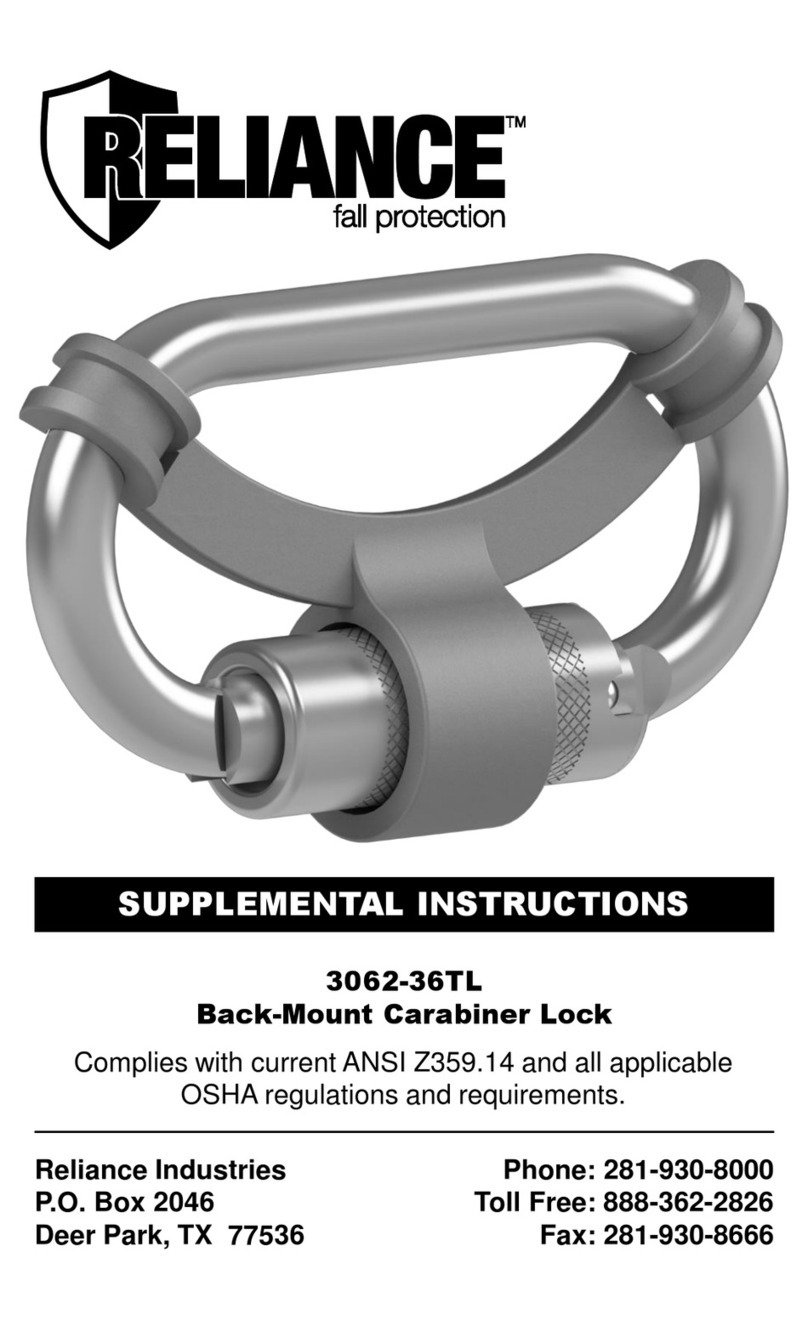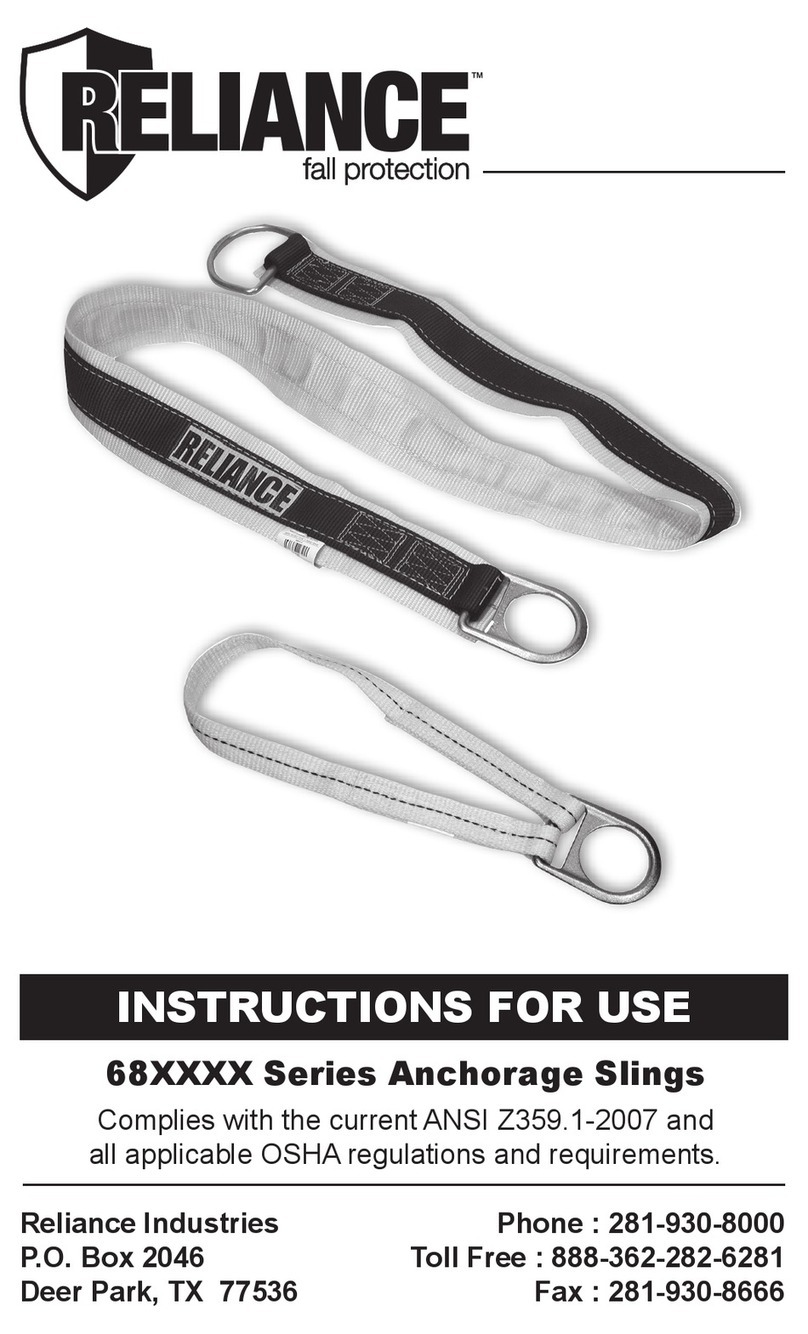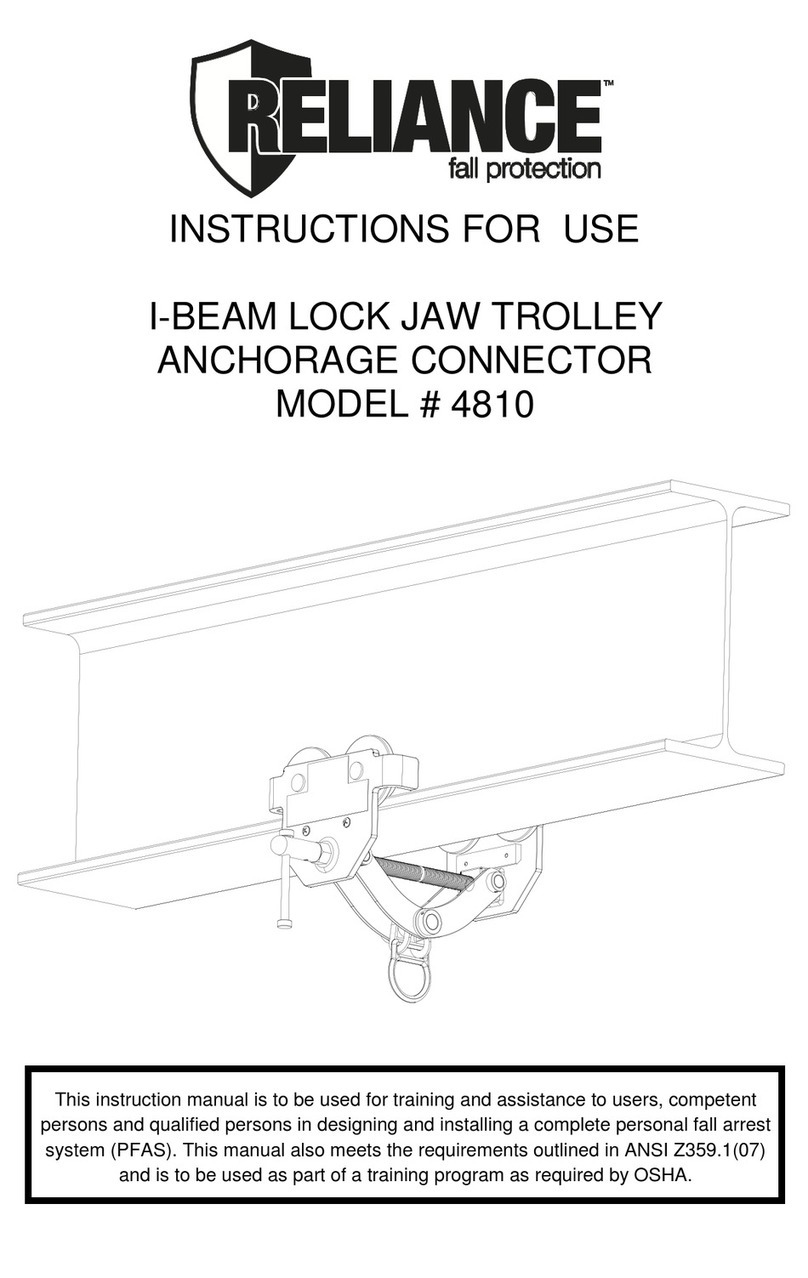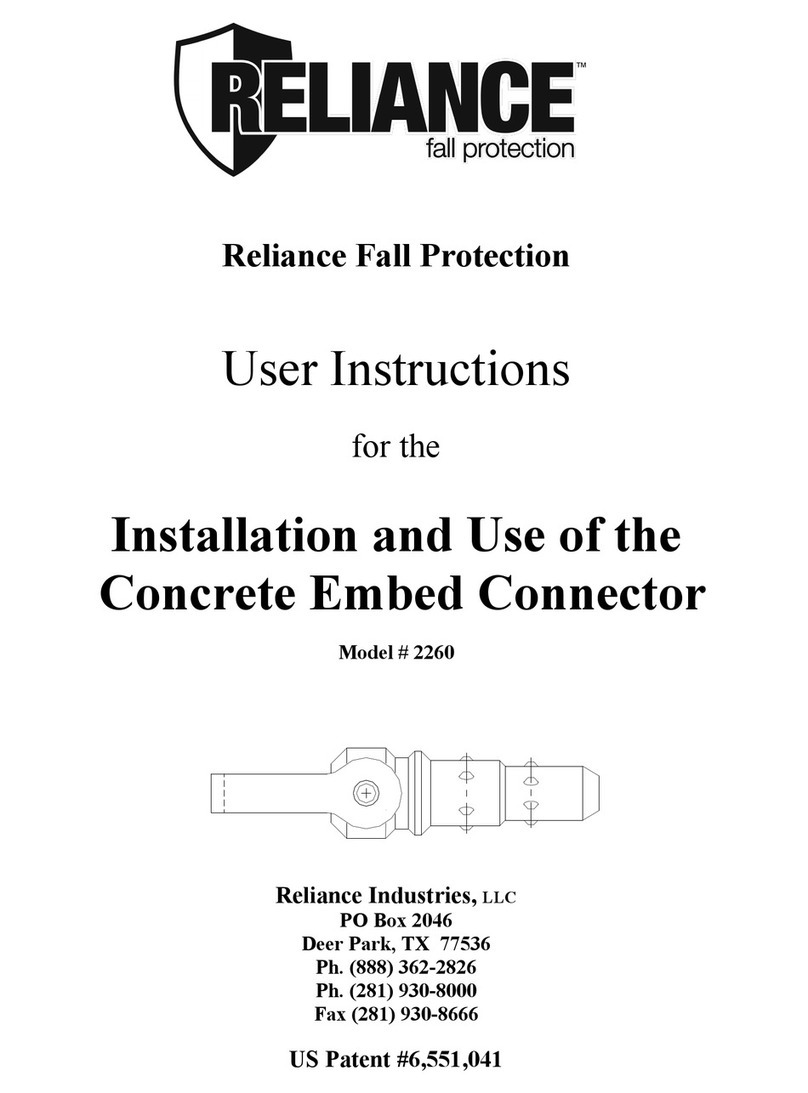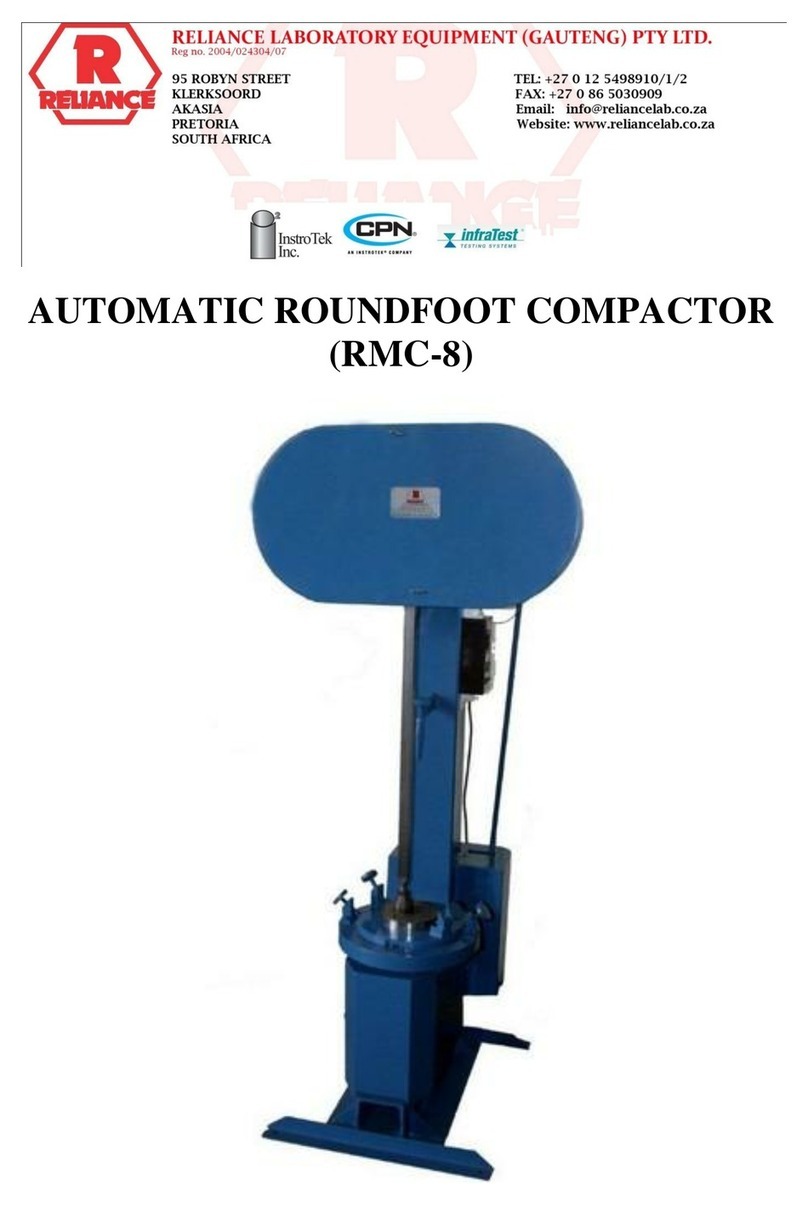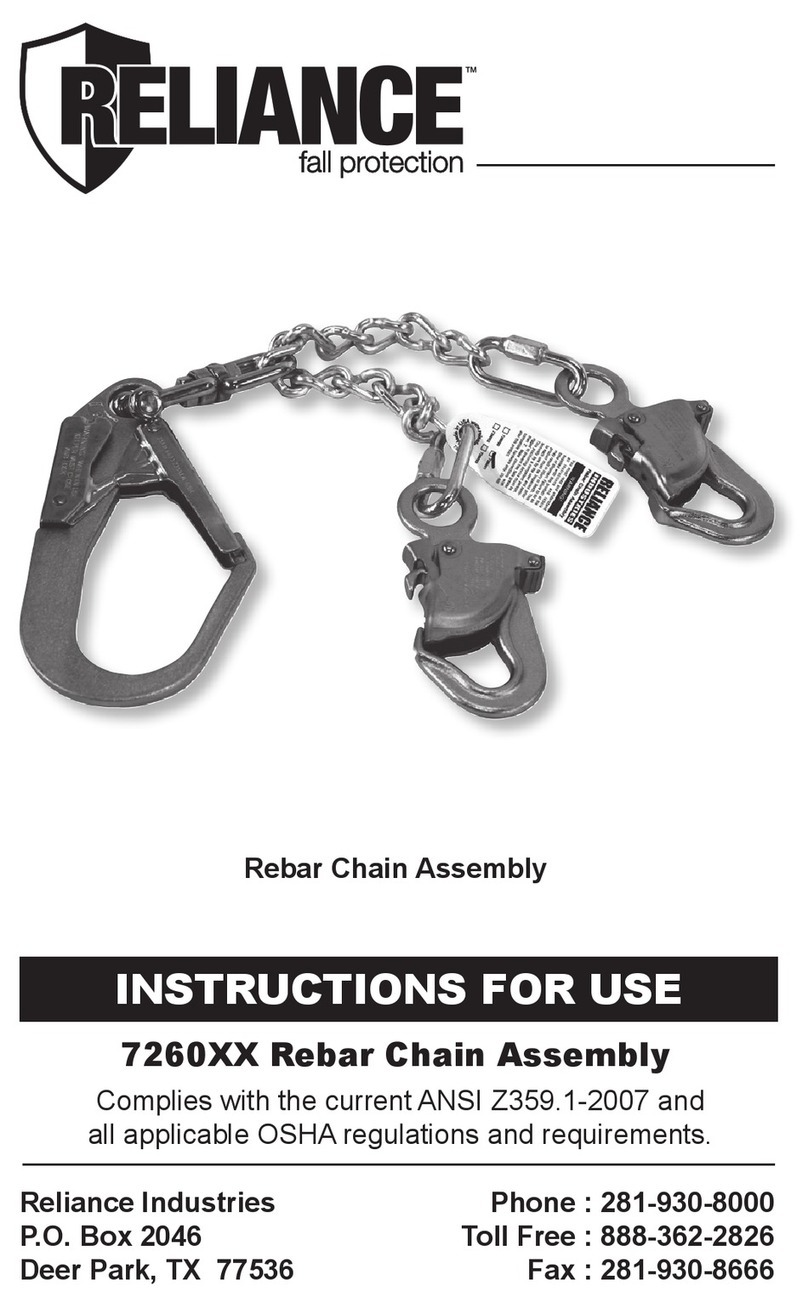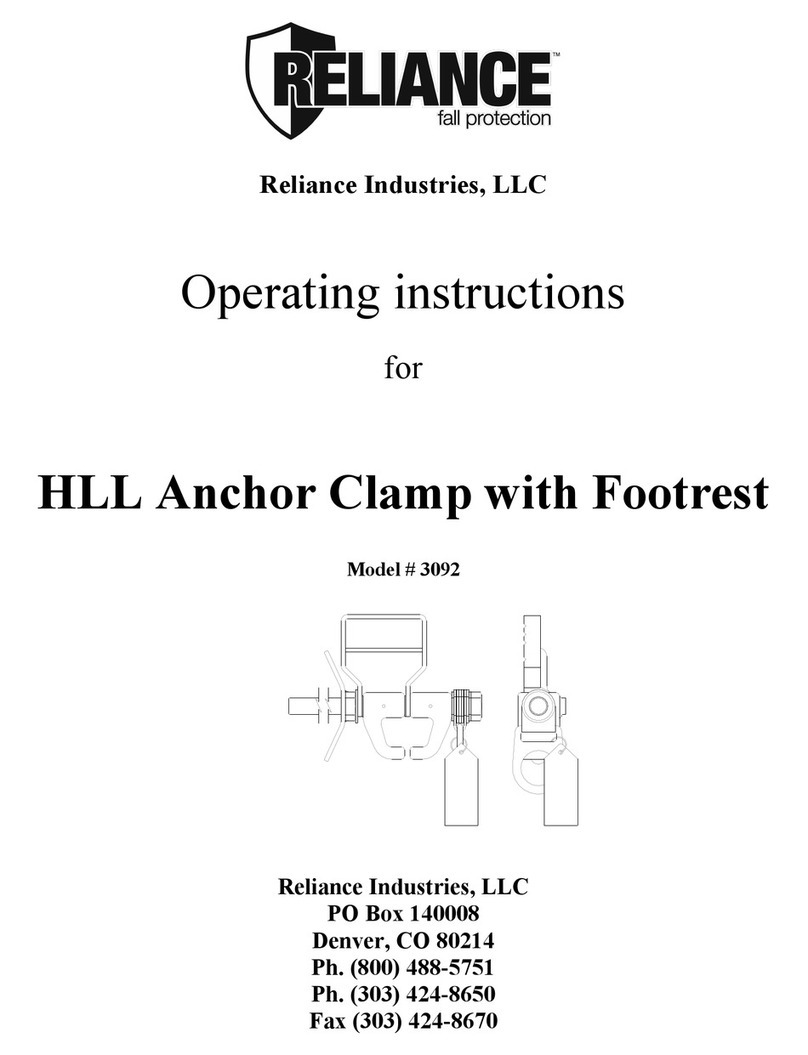
Instructions for Use
Page 13
2) COMPATIBILITY OF CONNECTORS
Connectors, such as D-rings, snap hooks, and carabiners, must be rated at
5,000 lb. (22 kN) minimum breaking strength and comply with ANSI Z359.12.
RELIANCE connectors meet these requirements. Connecting hardware
must be compatible in size, shape, and strength. Non-compatible connectors
may accidentally disengage (“rollout”) or false engage. Always verify that the
connecting snap hook or carabiner and the D-ring on the harness or anchorage
connector is compatible. Some harness models have web loop connection
points. Do not use snap hooks to connect to web loops unless the snap hook
complies with ANSI Z359.12. A self-locking carabiner may also be used to
connect to a web loop. Ensure the carabiner cannot cross-gate load (load
against the gate rather than along the backbone of the carabiner). Connecting
subsystems (Self Retracting Lanyard, lanyard, rope grab and Lanyard, cable
grab, etc.) must be suitable for your application.
EXAMPLES OF INAPPROPRIATE CONNECTIONS :
A. To a D-ring to which another connector is attached
B. In a manner that would result in a load on the gate.
C. In a false engagement, where features that protrude from the snap hook
or carabiner catch on the anchor and seem to be fully engaged to the anchor
point.(Reliance has designed the width of the head and gates of Reliance snap
hooks to prevent this issue in most D-rings.)
D. To each other.
E. Directly to webbing or rope lanyard or tie-back.
F. To any object shaped such that the snap hook or carabiner will not close and
lock, or that could cause roll-out should a fall occur.
3) ANCHORAGES AND ANCHORAGE CONNECTORS
Anchorages for personal fall arrest systems must have a strength capable of
supporting a static load, applied in directions permitted by the system, of at
least: (a) 3,600 lb. (16 kN) when certication exists, or (b) 5,000 lb. (22.2 kN) in
the absence of certication. When more than one personal fall arrest system
is attached to an anchorage, the anchorage strengths set forth in (a) and (b)
must be multiplied by the number of systems attached to the anchorage. This
requirement is consistent with OSHA requirements under 29 CFR 1910 & 1926.
Anchorage connectors must be selected carefully. Eyebolts should not be
used if they will be loaded at an angle to their axis, unless the loads fall within
design parameters for such use. Weld-on lugs should not be less than 1/2 in
(12.7mm) in width and should not be made of steel with less than 50,000-PSI
yield strength. The proper stress areas and weld areas must be calculated to
assure proper safety. If in question, consult Reliance Industries Engineering for
proper design requirements.




















